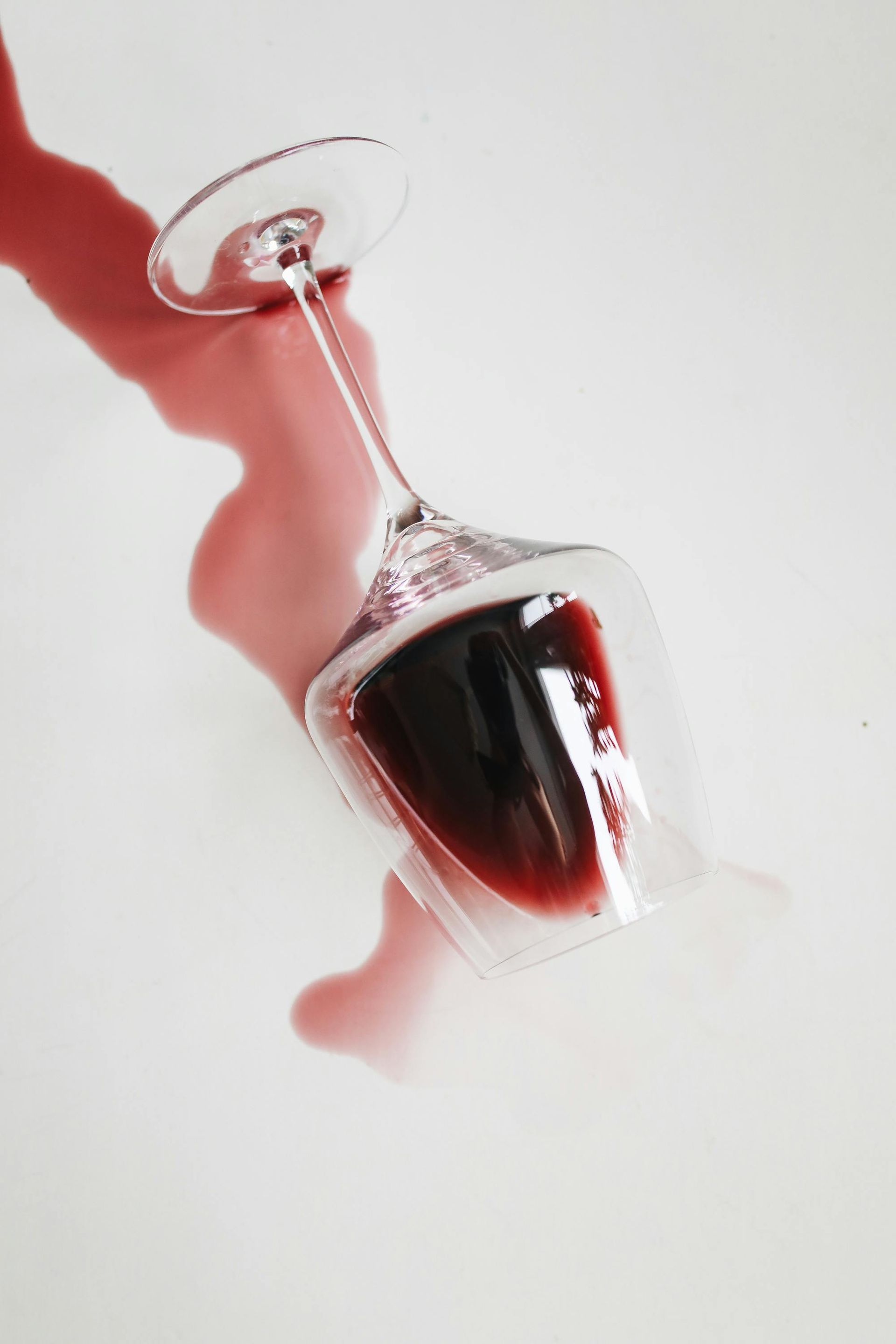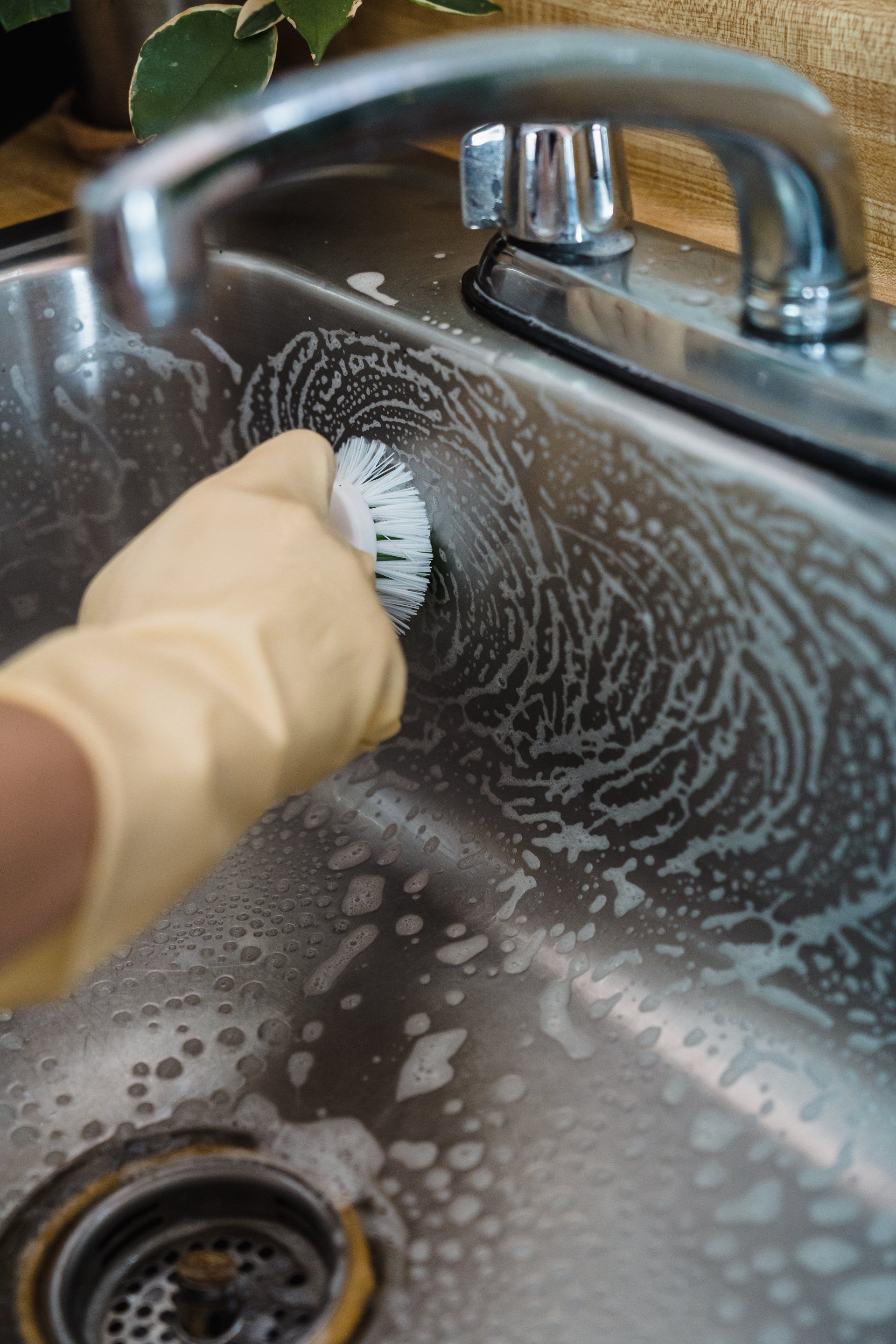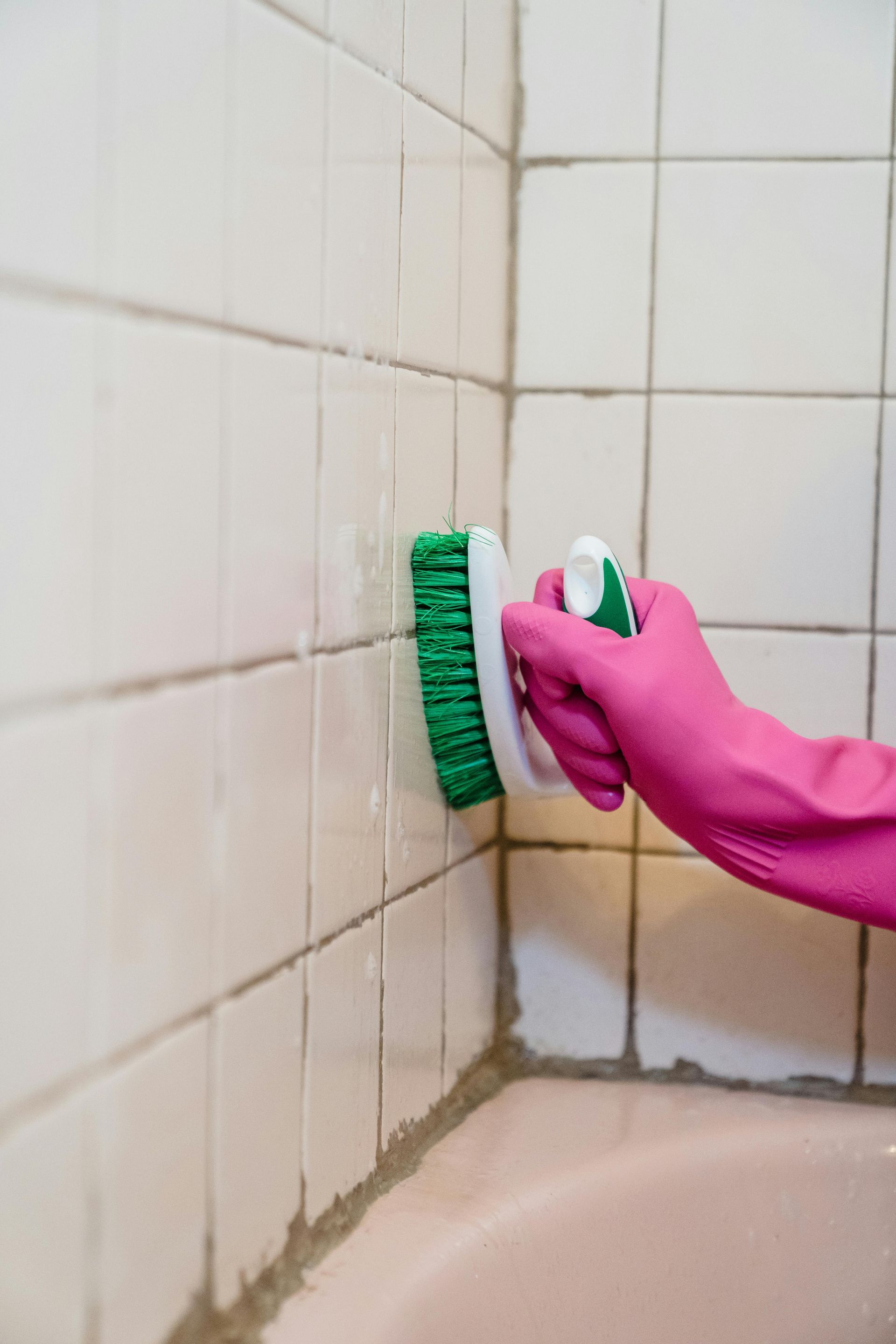Can You Remove Wine Stains from Marble?
Can You Remove Wine Stains from Marble?

Wine spills can be a beautiful disaster at a party, but they can leave behind unsightly stains on your marble surfaces. Yes, you can remove wine stains from marble with the right approach and products. Understanding the characteristics of marble is essential for effective stain removal, helping you protect your investment and preserve your home's elegance.
When faced with a wine stain, knowing how to respond quickly can make all the difference. Small actions can prevent lasting damage, offering a path to restoring your marble's original beauty. Famous Marble is here to guide you through effective methods and professional services that can tackle even the toughest stains with confidence.
Maintaining your marble surfaces not only enhances your home's aesthetic but also prolongs their lifespan. In this article, you'll discover practical tips for wine stain removal, preventive measures to avoid stains, and the benefits of expert restoration services.
Key Takeaways
- Quick action is crucial for removing wine stains from marble.
- Professional help can restore marble surfaces effectively.
- Understanding marble care is essential for long-term maintenance.
Understanding Marble Characteristics
Marble is a unique natural stone that has distinct characteristics impacting its use and maintenance. Understanding these properties can help you take better care of your marble surfaces, especially when dealing with stains, such as wine.
Porosity and Sensitivity to Stains
Marble is a porous material, meaning it can absorb liquids, which makes it susceptible to stains. When a spill occurs, such as wine, it can seep into the pores, leaving a mark.
To minimize staining, sealing your marble is essential. A good sealant creates a barrier that helps prevent liquids from penetrating the surface. Regular maintenance, including reapplying the sealant, will enhance its protective qualities.
If a stain does occur, acting quickly is vital. Use a gentle cleaning solution specifically designed for marble. Avoid acidic cleaners, as they can damage the stone. Understanding this porosity can aid in immediate actions to reduce permanent staining.
Types of Marble Finishes
The finish of marble not only affects its aesthetics but also its maintenance requirements. Common finishes include polished, honed, and tumbled.
- Polished marble features a high-gloss surface. It reflects light and enhances color but is more susceptible to scratches and requires regular polishing to maintain its shine.
- Honed marble has a matte finish, providing a softer look. It is less slippery and better at hiding scratches but can be more vulnerable to staining since it is more porous.
- Tumbled marble has a textured surface, which adds a rustic appeal. While it is less prone to visible scratches, it can be more challenging to clean due to its uneven texture.
Understanding these finishes can help you choose the right cleaning and restoration methods, ensuring your marble remains beautiful and enduring.
Common Causes of Marble Stains
Marble can be vulnerable to various stains, particularly from substances found in everyday life. Understanding the specific causes can help you prevent damage and maintain the beauty of your marble surfaces.
The Acidic Nature of Wine
Wine stains are common due to wine's acidic properties. When spilled, the acids can react with the calcium carbonate in marble, leading to etching. This etching appears as dull spots on the surface, making it less visually appealing.
Types of Wine and Their Effects:
- Red Wine: Often leaves deep, pigmented residues that can be tough to remove.
- White Wine: While less pigmented, it still contains acids that can etch the surface over time.
Immediate treatment of wine spills is crucial. Blot up the spill quickly and avoid wiping, which can spread the stain. Using a paste of baking soda and water may be helpful for treatment, but ensure you test it in a small area first. For stubborn stains, consider professional help to restore your marble surface effectively.
Preventive Measures for Marble Care
Proper marble care involves both immediate actions and routine maintenance. By focusing on these strategies, you can significantly reduce the risk of stains and maintain the beauty of your surfaces.
Immediate Action to Prevent Staining
If you spill wine on your marble surface, act quickly. The longer the wine sits, the more likely it will stain. Blot the area gently with a soft cloth to absorb as much wine as possible.
Do not rub, as this can spread the stain.
After blotting, rinse the area with lukewarm water and a mild pH-balanced soap. Avoid using acidic cleaners, which can damage the marble's finish.
If a stain persists, a mixture of baking soda and water can be applied to create a paste. Apply it to the stain, cover with plastic wrap, and let it sit for at least 24 hours.
This method can help draw out the stain without damaging the surface.
Routine Maintenance Tips
Establishing a routine maintenance schedule can extend the life of your marble. Clean your marble surfaces daily with a soft, damp cloth to remove dirt and prevent buildup.
Use coasters or mats under glasses and bottles to protect against spills. It's also advisable to use cutting boards to avoid scratches and etching.
Consider sealing your marble every 6 to 12 months. Sealing creates a protective barrier that minimizes stain penetration. When selecting a sealant, ensure it is suitable for marble.
Regularly inspect your marble for signs of wear and address any issues promptly. This proactive approach can help maintain the integrity and appearance of your marble surfaces.
Professional Marble Restoration Services
Maintaining marble surfaces can be challenging, especially when dealing with tough stains like wine. Knowing when to seek professional help and what to expect from restoration services is essential for preserving the beauty of your marble.
When to Call the Professionals
You should consider contacting professionals when wine stains become stubborn, showing no signs of fading with traditional cleaning methods. If you notice discoloration or etching, these may indicate that the surface requires specialized care.
Signs it’s time to call for help include:
- Persistent stains that remain after cleaning
- Etched or dull surfaces
- Damage from improper cleaning products
In Los Angeles, companies like Famous Marble offer expert marble restoration services that can effectively address these issues. They use advanced techniques to restore the marble's original finish and shine, ensuring your surfaces look their best.
What to Expect from Restoration Services
When engaging a marble restoration service, you can expect a thorough assessment of your marble surfaces. Professionals will identify the specific type of damage and determine the best restoration approach.
The process typically includes:
- Deep cleaning: Using specialized products to eliminate dirt and stains.
- Honing: Smoothing the surface to remove etch marks and scratches.
- Polishing: Restoring shine and enhancing the appearance of the marble.
Famous Marble in Los Angeles provides tailored solutions to meet your needs. You will receive a detailed plan and timeline for the restoration process, ensuring transparency throughout.
DIY Methods for Removing Wine Stains
Removing wine stains from marble can seem daunting, but several effective DIY methods can help you tackle this issue. By using common household items, you can often clear away these stubborn stains and restore your marble surfaces.
Home Remedies and Their Effectiveness
Many home remedies can effectively remove wine stains from marble. Here are a few options you can try:
- Baking Soda Paste: Mix baking soda with water to form a thick paste. Apply it to the stain, let it sit for 10-15 minutes, and gently scrub with a soft cloth. Baking soda acts as a mild abrasive, helping to lift the stain without damaging the marble.
- Hydrogen Peroxide Solution: Combine three parts hydrogen peroxide with one part dish soap. Apply the mixture directly to the stain and let it sit for 20-30 minutes. This solution is particularly effective for light-colored marble, as it can brighten the surface.
- Warm Water and Dish Soap: Sometimes, simpler is better. Mix warm water with mild dish soap and use a soft cloth to blot the area. This method is gentle and suitable for regular cleaning to prevent stains from setting.
Step-by-Step Guide to Stain Removal
Follow these steps for effective wine stain removal from your marble surfaces:
- Blot the Stain: As soon as the spill occurs, use a paper towel or a clean cloth to blot the wine stain. Avoid wiping it, as this can spread the stain.
- Choose Your Method: Decide on one of the home remedies mentioned above. For staining that persists, a baking soda paste or hydrogen peroxide solution works well.
- Apply the Solution: Apply your chosen remedy to the stained area. Make sure to cover the entire stain for maximum effect.
- Let it Sit: Allow the solution to sit for the recommended time. This gives the ingredients time to work effectively on the stain.
- Rinse and Dry: After the stain is lifted, rinse the area with clean water to remove any residue. Dry the marble with a soft towel to prevent water spots.
Using these methods can help you maintain the beauty of your marble surfaces while effectively addressing wine stains.
Choosing the Right Products for Marble
Selecting the right cleaning products for marble surfaces is crucial for maintaining their beauty and longevity. Using safe and effective agents can prevent damage while ensuring that your marble remains pristine.
Safe Cleaning Agents for Marble
You should always use pH-neutral cleaners specifically designed for marble surfaces. Products with acidic ingredients, such as vinegar or lemon juice, can etch the stone and leave permanent damage.
Look for cleaners that contain the following:
- pH-neutral formulas: These help ensure that the surface is not harmed.
- Mild detergents: Opt for a gentle soap that can lift dirt without causing scratches.
Avoid harsh scrubbing pads. Instead, use soft cloths or microfiber towels for applying cleaners. This approach helps maintain the elegance of your marble while effectively removing stains and dirt.
Understanding pH Levels in Cleaning Products
Knowing the pH levels of your cleaning products is essential in marble maintenance. Marble is a calcium carbonate stone, which means it reacts negatively to acidic substances.
- pH scale: Ranges from 0 (acidic) to 14 (alkaline), with 7 being neutral. Marble cleaning products should ideally fall between 7 and 8.
- Acidic cleaners: Typically below pH 7 can etch and dull the surface.
Before using any product, check the label for its pH level. Maintaining a neutral pH will help keep your marble looking new and prevent costly repairs down the line.
Maintaining Marble Long-Term
Proper care and maintenance are essential for preserving the beauty of your marble surfaces. Implementing ongoing protection strategies and scheduling regular professional assessments will help you keep your marble in excellent condition for years to come.
Ongoing Protection Strategies
To protect your marble from everyday wear and stains, consider applying a high-quality sealant. This creates a barrier against spills and moisture, making it easier to clean your surfaces. Reapply the sealant every 6 to 12 months, depending on usage and exposure.
Incorporate a regular cleaning routine using pH-neutral cleaners specifically formulated for marble. Avoid acidic or abrasive products, as these can damage the surface.
When it comes to protecting from stains, prompt action is crucial. For spills, blot the area immediately with a soft cloth; do not rub, as this may spread the stain. Regularly inspect your marble for any signs of dullness or damage, which can signal the need for professional intervention.
Annual Professional Assessments
Scheduling annual professional assessments is vital for maintaining the longevity of your marble. Experts can identify issues that may not be visible to you, such as minor scratches or inconsistencies in the finish.
During these assessments, professionals will also perform deep cleaning, honing, or polishing as needed, ensuring your marble retains its luster. It’s advisable to hire specialists who understand marble restoration techniques tailored to your specific type of marble.
Consider partnering with a reputable company like Famous Marble for these services. Regular evaluations ensure that any emerging problems are addressed promptly, allowing you to enjoy your marble surfaces without extensive future repairs.
Conclusion
Removing wine stains from marble can be challenging, but it's certainly possible. With the right approach, you can restore your marble surfaces to their original beauty.
For effective stain removal, consider the following steps:
- Act Quickly: Attend to the stain as soon as possible to prevent permanent discoloration.
- Use a Gentle Cleaner: Opt for a pH-balanced cleaner specifically designed for marble.
- Blot, Don't Rub: Gently blot the stain to lift it without further embedding it.
If home methods aren’t successful, reaching out to professionals is a smart choice. At Famous Marble, located in Los Angeles, CA, we specialize in marble restoration and can provide the expert care needed to eliminate stubborn stains.
Don’t hesitate to contact us for personalized advice or assistance. Your marble deserves the best treatment to keep it looking pristine.



